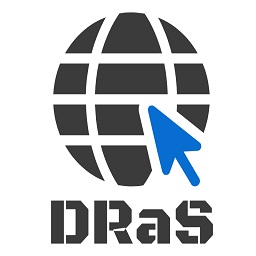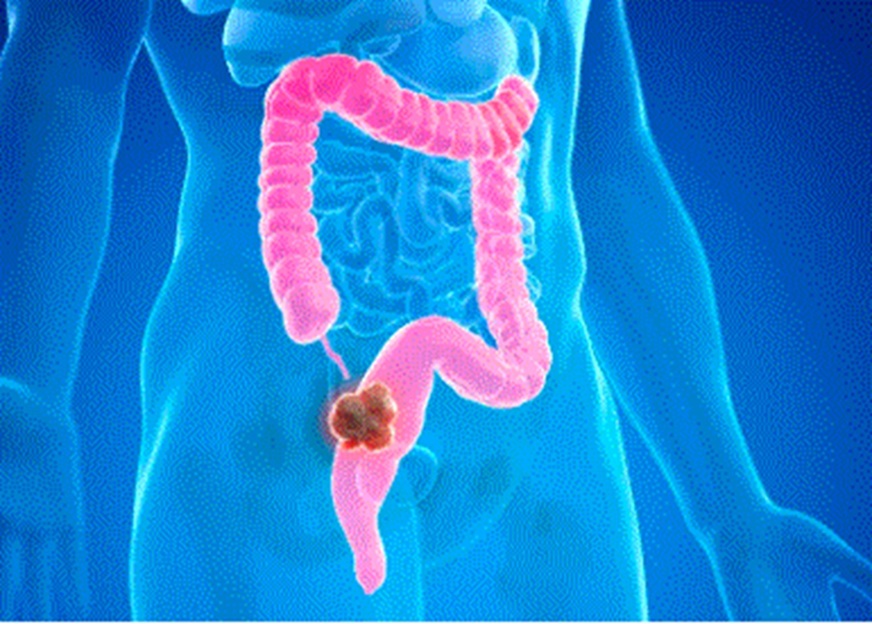Army Medical Corps (AMC) personnel post retirement can play a major role in contributing towards the citizens’ health. Combating cancer at home and in the neighbourhood is one of the many initiatives that they can take up in the coming years.
Introduction
The Army Medical Corps (AMC) personnel, even after retirement, stands as a reserve for the nation. Health, Fitness, & Poise are the 3 dimensions of defence personnel of any age. Defence health & fitness-related research & own technology had drawn much public investment, approbation & approval in the 1970-to-80’s, thus India was well ahead of China. Since 1990, R & D units & programs became pro-establishment with all seats reserved for permanent squatters. All that & those institutes are now hulks. Times have changed. R-&-D is now Technology-&-Research (T-&-R) is extra mural matter whereof it is leap-forging forward. Thus, relevant R&D developed outside the establishment should be acquired and adopted. Field commanders also need to be given powers so that they may opt to uptake Indian private enterprise’s innovations & inventions. This will enable retiree staff to either get involved in start-ups and or join existing ones and lead life gainfully. The medical institutes should be handed over to enterprising young medicos. And the youth shall make India overtake China once again. Rest assured. 1 This medical group has been sidelined for decades and hence can now be utilized to combat cancer at home with never-before returns on investments.
Family Physician – Functional Food & Colorectal Cancer
Colorectal cancer (CRC) is one of the most prevalent malignancies worldwide, with rising incidence and significant challenges, including high recurrence rates, local and distant metastasis, and severe lifestyle disruptions2. Its rate of prevalence among the defense forces is said to be rapidly rising due to abrupt alteration from active physical work to sedentary work post retirement. Despite the availability of treatment options, including chemotherapy, the need for cold-chain-dependent drugs and the associated toxic side effects pose substantial barriers to effective care, particularly in rural and remote areas. Family Physicians (FPs) are well-equipped with local support teams, medical expertise and drug storage facilities, and are uniquely positioned to assist in CRC management. However, due to a widespread misconception that legal frameworks do not permit their involvement, they largely refrain from treating cancer patients. Notably, in India—the world’s largest democracy—laws do allow FPs to play a more active role in oncology care, yet this remains largely unknown and underutilized. FPs also possess deep knowledge of Functional Foods (FFs), which are abundant in tropical and equatorial regions and have demonstrated potential in mitigating chemotherapy side effects, enhancing patient recovery, and improving overall well-being. Integrating FFs into CRC management under the supervision of FPs could offer a holistic, patient-centered approach that benefits all stakeholders—patients, healthcare providers, and the pharmaceutical industry. This paper explores the potential role of FPs in CRC care, the integration of FFs in treatment regimens, and the medico-legal considerations surrounding this paradigm shift. By leveraging the expertise and accessibility of FPs, CRC management can be made more comprehensive, ensuring better patient outcomes, economic benefits, and an expanded healthcare market that prioritizes family welfare and prolonged survival3.
Medico Legal Aspect
The Indian National Medical Commission Act (NMCA) of 2019, under Section 31(1), explicitly permits FPs to provide cancer care, including chemotherapy. Furthermore, Section 32 of the same Act recognizes Community Health Providers (CHPs) as legitimate healthcare stakeholders, extending legal support to multidisciplinary teams, including academics, nurses, and other trained professionals4. India is the sole nation to have done so, a case of leadership.
Take Home Points :
Defence clinicians are conservative, have a knack for FFs, have excellent pension & lifestyle benefits so as not to be commercial (patient \system exploiting) and can be gainfully used for national & social welfare as FPs in ‘Fight Cancer At Home’. Such a large resource personnel pool is currently scantily used due to ‘fear of Law’, which is unfounded. Def Ministry; AMC & IMC should utilize India’s potential (which is idling).
Clinical; Nursing; Paramedical; Teaching & Research defense personnel (superannuated) should be enrolled on a National Electronic Register (NER). Such NER may spew once a month (only) AI powered refresher course; practice & latest style updates and in-society skill relevance retaining tipps and info. To enroll, remain and profit from being a part of the various pan-India & mass plans & programs5,6.
The Defence, Home, Health, and Family Welfare ministers & Secretaries and the DGs et al. can also remain in touch with the far-flung located highly disciplined and anti-greed medical corps (even the solitary person in no-where India).
- Systemic Inflammation and Response Pathology.
- Chemotherapy-Induced Toxicity
- Systemic Anemia in CRC Patients
- Medico-Legal Considerations
Nine Key Aspects in CRC (All Clinical Stages) During Chemotherapy Cycles 25-35
In colorectal cancer (CRC), across all clinical stages, nine notable aspects require special attention during chemotherapy cycles:
- Collapsed Gut Lumen – A common complication impacting digestion.
- Lumen Constriction Due to Lymph Node Inflammation – Worsens bowel obstruction.
- Declining hemoglobin levels with hypotension and fatigue can lead to systemic weakness.
- Resultant Hemodynamic Alterations – Affecting circulatory stability.
- Gastrointestinal Distress – Including nausea, mild cramps, and a persistent uneasy stomach.
- Opportunistic Viral Infections – Heightened susceptibility due to immunosuppression.
- Nutritional Support for Chemotherapy – Site-specific dietary interventions to enhance treatment efficacy.
- Mood Swings and Depression – Psychological impact of CRC and treatment.
- Addressing the Ill-Feel Factor – Transitioning from discomfort to well-being.
Functional Foods (FF) in CRC Management
Functional foods (FF) are not equivalent to medical diets. Instead, they are rooted in anti-malignancy research and involve a collaborative effort between nurses, patients (both under treatment and in observation phases), and family caregivers. FF interventions are nurse-mediated and remotely supervised by healthcare professionals, ensuring dietary adherence and therapeutic efficacy7,8,9.
Key Functional Foods and Their Benefits:
The following, along with the run-up citations, may be weighed in for optimum management of CRC in the far of the wild by the solitary defense health care professional in national-&-social duty to ‘Combat Cancer-at-Home’10,12
- Curd (Homemade Probiotic Yogurt): Supports gut microbiota, countering chemotherapy-induced disturbances. Helps restore Akkermansia muciniphila levels, often depleted during treatment.
- Legumes for Gut Lumen Health: Green gram (Vigna radiata) and black gram (Vigna mungo) aid in gut biome restoration.
- Minor Millets: Essential in CRC and solid cancers for overall metabolic support.
- Mustard Oil (Brassica juncea): This is the preferred cooking medium due to its hydrophobic properties and non-counteractive nature with CRC.
- Renal Support with Herbal Extracts: Tribulus terrestris, Boerhavia diffusa, and Macrotyloma uniflorum for kidney function preservation.
- Sweet and Energy-Dense Foods: Homemade candies (peethas), mild sweet fries, soups, noodles, and gram flour-based snacks enhance appetite and caloric intake.
- Dairy-Based Functional Foods: Cottage cheese, clarified butter (ghee), and milk support energy metabolism and drug vectoring.
- Gut-Soothing Herbs: Asafoetida (Ferula asafoetida), sesame seeds, and warm water aid in digestion and reduce bloating.
- Tubers and Rhizomes: Most are beneficial, except for vitamin A-rich varieties like carrots.
- Ayurvedic Elixirs: Dasamularishta or Panchamularishta for diabetic and non-diabetic CRC patients.
- Minor Millets and Country Grains: Promote anti-acidity, mild ulcer healing, and regulated bowel movements.
- Brining and Hydration Strategies: Bristling brine to counter drug-induced dehydration and electrolyte imbalances.
- Iron Supplementation: Ayurvedic Lohasava for hematopoiesis and anemia management.
- Fruit-Based Therapies: Pomegranate for anti-inflammatory effects and virus resistance.
- Unripe sun-dried mango (ambula) as an effective CRC supplement.
- Mental Well-Being Interventions: Papaver somniferum for mood stabilization and REM sleep regulation.
- Natural Pain Management: Dried poppy carp and Ayurvedic formulations like Mritasanjibani.
- Exercise and Sun Exposure: Induces peripheral circulation, metabolism of therapeutic toxins, and stress relief.
- Traditional Healing Foods: Chyawanprash, Dasamularishta, and Mritasanjibani as general regeneratives.
- Oral and Dental Hygiene: Guava twigs, neem stick brushing, and natural antiseptics for gum health.
- Anti-Parasitic Measures: Erythrina variegata leaves and pineapple juice for post-chemotherapy pinworm infestations.
Functional Foods and Symptom Management
| Symptom | Functional Food Remedy |
| Urination pain | Tulsi and Bel leaves, antifungal applications |
| Renal insufficiency | Tribulus terrestris, Boerhavia diffusa, Enhydra fluctuans |
| Hypotension | Topical application of Vicks Vaporub, Amrutanjan |
| Joint pain | Warm saline gargles, mustard oil massage |
| Swollen lymph nodes | Vinca Rosea leaves (3/day during CT cycle) |
| Mood swings | Papaver somniferum, aromatic flowers, spices |
| Burning sensation (palms/feet) | Glycerin, camphor, Ricinus communis and sesame oil |
| Gallbladder stones | Hygrophila auriculata burnt seeds (blackened) |
| Jaundice | Punica granatum, Macrotyloma uniflorum, Lawsonia inermis |
| Constipation | Ripe plantain, mango, dates, cannabis leaves |
| Diarrhea | Roasted rice, gram flour fries |
| REM sleep aid | Papaver somniferum, Mritasanjibani |
Contraindicated Functional Foods
Certain foods should be avoided in CRC, as they may counteract chemotherapy effects or exacerbate symptoms:
- Iodized salt and iodine-rich foods
- Steroids and synthetic vitamins (especially Vitamin A)
- Crabs, fish oils, and palm/sunflower oil
- Green plantains and tamarind
- Mouthwashes with benzene, Dettol, or phenol
- Wheatgrass and genetically modified (GM) foods
- Citrates in renal stone patients
Heritage and Research Perspective
Ancient healthcare manuscripts, including Indian Ayurvedic, Persian, Mesopotamian, Maori, Incan, Chinese, and Nipponese traditions, reference functional foods as integral to disease management. However, none have explicitly linked them to CRC management, making this an evolving area of study. Research supports functional foods as an avenue for drug discovery, integrating bottom-up methodologies for safer and cost-effective cancer care13,14,15,16.
Heritage Aspect
In India, we note numerous ancient palm-leaf manuscripts titled ‘Determination Of Diet’17. Fig -1 is a token example (a 1st time expouser case). It shows such a rare specimen. It seems to be a redaction of the Original in Sanskrit (self gelling {language}), not in the library used.

Fig-1: Image of the original palm leaf manuscript as in Ref No.38. Photo (exposed for author on exclusive request) by Mr. Laxmidhara Sahu, Lab Assistant, Palm Leaf Section. Superintendant Odisa State Museum, Bhubaneswar –India (sole proprietor). Remarks: Odia lingua; Odia script; Approx. Folios Not recorded. Its major part is a redaction from the original Sanskrit, and the minor part is in sync with regional agro-met and regional health issues dt. between c.1750 and 1850 (like the other manuscripts cited in this transaction). The text & Label’s script is in Odia (regional vernacular). This museum conserves >20,000 palm-leaf manuscripts – all-inclusive. Digital versions of the cited manuscripts are available on application. Fig-1 merits mining. Library Call No:: Pathya Pathy Vinischaya, (c.1700-1850). Determination Of Diet, Ancient Palm Leaf Manuscript, By Biswanatha Sena, Library Call No. Ay -16;154;295-B, C/o Dr. Bhagya Lipee, Superintendant, Odisa State Museum, Bhubaneswar – India.
While various active pharmaceutical ingredients – APIs from Indian medicine (Ayurveda & Unani) have indicated as a source for Drug Discovery, including cancer18, the popular Glycyrrhiza glabra, a historical food item in greater parts of Asia and a prominent API in the Ayurveda, has been computationally docked with the CRC receptor protein19. The Avicenna school of medicine c.11th A.D.20 and the Sanskrit-Persian21 health care literature on ‘Functional Fruit’ speaks about anti-inflammation therapies and regenerative & anti-cancer concepts22. Sri Lanka (c.3rd BC) and Singhala\Lanka’s Buddhists (Hinayana & Mahayana) have their mints23,24,25. In Mesopotamia26; Maori27; Inca civilization28,29; Sino30,31; Nipponese32 and General Reports33,34 on health care Science related ff as the vital internal\oral healthcare items are noted. However, none relates even remotely to CRC.
Conclusion
India’s vast defence network has an in-lay of a firm grid of health services that includes outdoor & indoor efforts & excellent nursing force. All skilled & excellently capable. Defense health care recourse personnel mostly invariably take a conservative route and hence will find this communication as relevant, easy to appreciate & uptake as alike a swan taking to waters. However, AFMC is wanting in the Inventions & Discovery arenas. Any out-of-the-box work attracts a drowning stare as if a suspect subject of the Supreme Commander. A complete mind-set rebooting is urgently warranted. Why? because inventions & innovations get trapped by the eyes of the nurses and germinate in the hands of the Ph.D clinicians. In this regard, the surgeon-general of the US & Israel lead the global show. Either follow the dictum of ‘no holds bar’ to catch innovation by anybody anywhere (pan globally) and convert it into a cash cruncher. India is light-years behind.
Disclaimer: The views and opinions expressed by the author do not necessarily reflect the views of the Government of India and Defence Research and Studies
Image Courtesy: https://www.pennmedicine.org/

Acknowledgment
Extracted From
Research Jor of Pharmacy & Technology, (2025). Vol.18(2), pp.949-1004. https://www.rjptonline.org/AbstractView.aspx?PID=2025-18-2-71 (26-2-25)
Bridging the Gap: The Role of Family Physicians in Colorectal Cancer Care and Functional Food Integration
AUTHORS (multi-Lateral Team)
Dr. Deepak Bhattacharya1, Prof. Kavita Chenania2, Prof. Asadollah Asadi3, Chandra Sekhar Tripathy4, Prof. U. S. Mahadeva Rao5*, Diba Kiani6
Policy, Critical Nursing, Drug Discovery, Medicinal Toxicology & QC (primary – fountain author) at: Sri Radha Krishna Raas Mandir, Kedar Gouri Main Road, Bhubaneswar–751002, Odisa, India, Professor, Department of Obstetrics and Gynaecology, IMS and SUM Hospital, Associate professor, Department of Biology, University of Mohaghegh, Ardabili, Iran, Department of Botany, Centurion University of Technology and Management, Bhubaneswar, Odisha, India, School of Basic Medical Sciences, Faculty of Medicine, Kampus Perubatan, Universiti Sultan Zainal Abidin, 20400 Kuala Terengganu, Malaysia. *Corresponding Author E-mail: raousm@unisza.edu.my, Microbiologist, Islamic Azad University, Tabriz branch, Iran.
References
1 – Ackerknecht, Erwin H., (1984). From Barber-Surgeon To Modern Doctor, Bulletin of the History of Medicine, Vol. 58, No. 4 , pp. 545-553 (Johns Hopkins University Press). https://www.jstor.org/stable/44441795
2 – Bhattacharya, Deepak, et al. (2025). “In Silico Approach for Exploring Chemotherapeutic Agents and Monoclonal Antibody as TNIK Inhibitors in Colorectal Cancer”. EC Pharmacology and Toxicology, Vol., 13.4, pp. 01-10. URL will be released around 31-3-25.
3 – Gillam S. The Family Doctor Charter: 50 years on. Br J Gen Pract. 2017 May;67(658):227-228. doi: 10.3399/bjgp17X690809. https://bjgp.org/content/67/658/227
4 – National Medical Commission Act – 2019, Section 32, Chapter V, Govt of India. https://indiankanoon.org/doc/65570663/#:~:text=(1)The%20Commission%20may%20grant,granted%20under%20this%20sub%2Dsection
5 – Bhattacharya, Deepak, (2019). Combat Cancer At Home, Oncology Nursing and Cancer Care, 34th International Conference, Singapore. https://cancer.nursingconference.com/speaker/2018/deepak-bhattacharya-combat-cancer-at-home-ngo-r-nindia
6 – Bhattacharya, Deepak., (2017). Nursing Defeats Cancer, Jor of Nursing & Health Care, Vol.5(3), (juniper); https://juniperpublishers.com/jojnhc/archive.php
7 – Bhattacharya, D., (2020). Vedic Anti-Cancer – VAC How to Make, Indian Journal of Natural Sciences, Vol.10 / Issue 59, pp.18475-80. https://www.researchgate.net/publication/342004033_VEDIC_ANTI-CANCER_-VAC_How_to_Make
8 – Bhattacharya, D., (2016). A Novel Anti-Metastasis and CT’s Side Effect Reducer, Translational Medicine (Sunnyvale), 6:3 DOI: 10.4172/2161-1025.1000178. https://www.longdom.org/open-access-pdfs/a-novel-antimetastasis-and-chemotherapys-side-effect-reducer-2161-1025-1000178.pdf
9 – Bhattacharya, D., & Unnati Bhattacharya, (2018). Anti Tumor Orient Experiment – ATOX, Indian Journal of Natural Sciences, Vol.8 (48), pp.13996-14002. Table-1 & p.14002. file:///C:/Users/user/Downloads/ATOX-Supp-1.docx.pdf
10 – Bhattacharya, D., (2020). Vedic Anti-Cancer – VAC How to Make, Indian Journal of Natural Sciences, Vol.10 / Issue 59, pp.18475-80. https://www.researchgate.net/publication/342004033_VEDIC_ANTI-CANCER_-VAC_How_to_Make
11 – Bhattacharya, D., (2016). A Novel Anti-Metastasis and CT’s Side Effect Reducer, Translational Medicine (Sunnyvale), 6:3 DOI: 10.4172/2161-1025.1000178. https://www.longdom.org/open-access-pdfs/a-novel-antimetastasis-and-chemotherapys-side-effect-reducer-2161-1025-1000178.pdf
12 – Bhattacharya, D., & Unnati Bhattacharya, (2018). Anti Tumor Orient Experiment – ATOX, Indian Journal of Natural Sciences, Vol.8 (48), pp.13996-14002. Table-1 & p.14002. file:///C:/Users/user/Downloads/ATOX-Supp-1.docx.pdf
13 – Rasa Ratnakara, Recension by : Nitya-Natha (c. 1750-1850). Ancient Palm Leaf Manuscript, Odisa State Museum, Bhubaneswar – India, Catalogue Call No. Ay – 21-B;41-C; 183;349 (poly copies, recesiones & recensions). Remarks : Also Sanscrit lingua in Odia script. About Extracts & Liquid Therapies. Odia lingua – Odia script; Approx. Folios Not recorded, Moth eaten & Borers. https://www.puranavedas.com/3d-flip-book/rasratnakam/
14 – Lauhasava, 2024. https://healthplus.flipkart.com/dabur-lauhasava-syrup-450-ml-dabur-india-ltd-bd/p/nkzpt9
15 – Vesaja Ratnavali., Dasa Gobinda Ed., (c. 1700-1800). Ancient Palm Leaf Manuscript, Odisa State Museum, Bhubaneswar – India, Catalouge Call No. Ay-20.Remarks :Odia lingua; Odia script; Approx. Folios Not recorded, Moth eaten & Borers. https://www.dline.info/jcl/fulltext/v10n4/jclv10n4_3.pdf
16 – AYUSH, (2023). What Are The Main Rasayana (Immuno-Modulator) Medicines of Ayurveda ?, Govt Of India., https://main.ayush.gov.in/ayush-systems/ayurveda/faq/what-are-the-main-rasayana-immuno-modular-medicines-of-ayurveda/ (Ref: Cha.Sa. Sutra Sthana 30/28).
17 – Pathya Pathy Vinischaya, (c.1700-1850). Determination Of Diet, Ancient Palm Leaf Manuscript, By Biswanatha Sena, Library Call No. Ay -16;154;295-B, Odisa State Museum, Bhubaneswar – India. Remarks : Odia lingua; Odia script; Approx. Folios Not recorded.
18 – Bhattacharya. Deepak, et.al., (2020). COVID – 2019 and Indian Medicine Sources Drug Discovery Attempt, Indian Journal of Natural Sciences, Vol.10 (61), pp. 1-10. https://www.researchgate.net/publication/343979504_COVID_-2019_and_Indian_Medicine_Sources_Drug_Discovery_Attempt
19 – Tripathy, C.S. et al., (2022). Colorectal Cancer Vrs Glycyrrhiza glabra – Computational Docking & DFT Analysis vis-à-vis TNIK Receptor Protein, International Journal of Innovative Science and Research Technology , Vol. 7, (7), pp. 38-50. https://ijisrt.com/colorectal-cancer-vrs-glycyrrhiza-glabra-computational-docking-dft-analysis-visvis-tnik-receptor-protein
20 – Avicenna Research Institute, Teheran, https://www.ajmb.org/
21 – Bhattacharya, Deepak & Habibi Bibalani.et.al., (2020). Punica Granatum Vrs Covid-19 Fruit to Drug. Research Journal of Pharmacology and Pharmacy,Vol. 4:9. https://escipub.com/rjpp-2020-08-0305/
22 – Rao, Bhattacharya, et.al., (2024). Punica granatum and Ellagic Acid in Health Care Functional Fruit: Unique Bibliography, Research J. Pharm. and Tech, Vol.,17(1), pp.452-459. https://rjptonline.org/AbstractView.aspx?PID=2024-17-1-71
23 – Pranavitana, S., (1934). Medicine & Hygiene As Practiced In Ancient Ceylon, Book, Colombo Catholic Press (curtsey – Diplomatic office).
24 – Bhesajjamanjusa (Manjusa the Surgeon), A commentary by Sri D.V. Dharmananda (1967). New Edition, Singhala, Elpitia – Kinsila Press, Lanka. Original Pali. (indo-Devenagari Ed., https://www.exoticindiaart.com/book/details/bhesajja-manjusa-devanagari-edition-ubb879/ )
25 – Liyanaratne , Jinadasa ., (2001). Some Sri Lankan Medical Manuscripts of Importance for the History of South Asian Traditional Medicine, Bulletin of the School of Oriental and African Studies, University of London, Vol. 64, No. 3 (2001), pp. 392-400. https://www.jstor.org/stable/3657607
26 – Borchardt, John K., (2002). The Beginnings of Drug Therapy: Ancient Mesopotamian Medicine, Drug News & Perspectives, Vol.15(3), pp.187-192. DOI: 10.1358/dnp.2002.15.3.840015. https://www.researchgate.net/publication/10821121_The_Beginnings_of_Drug_Therapy_Ancient_Mesopotamian_Medicine
27 – Cambie, Richard C & L. R. Ferguson, (2003). Potential functional foods in the traditional Maori diet, Mutation Research/Fundamental and Molecular Mechanisms of Mutagenesis, Vol. 523–524, pp. 109-117. https://www.sciencedirect.com/science/article/abs/pii/S0027510702003445
28 – WWW (2024). Medicine of The Incas, https://www.ticketmachupicchu.com/medicine-incas/
29 – Gladys Moscoso-Mujica, et.al., (2024). Kañihua (Chenopodium pallidicaule Aellen), An Ancestral Inca Seed And Optimal Functional Food And Nutraceutical For The Industry: Review, Helion, Vol. 10, Issue 14, e34589. https://www.sciencedirect.com/science/article/pii/S2405844024106202
30 – Cidian, Z.D., (2005). Grand Dictionary Of Chinese Traditional Medicine, 2nd Edition, Shanghai Science & Technology Press, Shanghai, https://www.amazon.com/Dictionary-Chinese-Traditional-Medicine-Zhongyao/dp/7532308421
31 – Read, B. E., (1936). Chinese Medicinal Plants From The Pen Ts’ ao Kang Mu 本草綱目 AD 1596 Of A Botanical, Chemical And Pharmacological Reference List. (No Title). Ed. and Reproduced (1977) in Chinese Medicine Series, Taipei : Southern Materials Center.ISBN : 0598606637, 9780598606631. https://books.google.co.in/books/about/Chinese_Medicinal_Plants_from_the_Pen_Ts.html?id=Fo1iMgEACAAJ&redir_esc=y [ also in Nature @ https://www.nature.com/articles/138484a0 ]
32 – Arai S, Yasuoka A & Abe K. (2008). Functional Food Science And Food For Specified Health Use Policy In Japan: State Of The Art. Curr Opin Lipidol, Vol. 19(1), pp.69-73. doi: 10.1097/MOL.0b013e3282f3f505. PMID: 18196990. https://pubmed.ncbi.nlm.nih.gov/18196990/
33 – Jew Stephanie , et.al., (2009). Evolution of the Human Diet: Linking Our Ancestral Diet to Modern Functional Foods as a Means of Chronic Disease Prevention, Journal of Medicinal Food, Vol. 12, No. 5, https://doi.org/10.1089/jmf.2008.0268. https://www.liebertpub.com/doi/10.1089/jmf.2008.0268
34 – Bhattacharya, Deepak., (2024). Heatwaves and Sunstroke Management, Defense Research & Studies (Healthcare & Medicine). https://dras.in/heatwaves-and-sunstroke-management/








